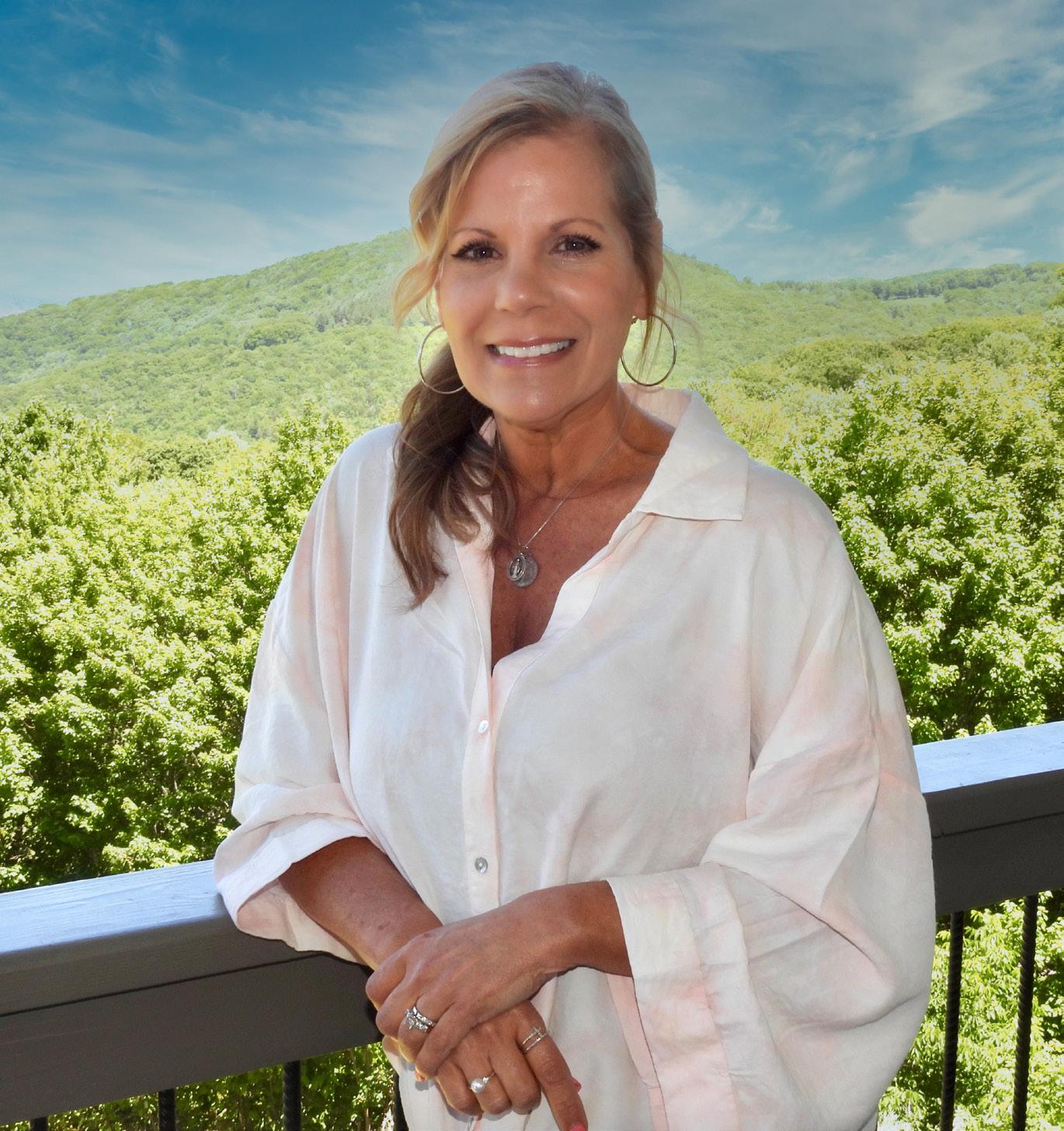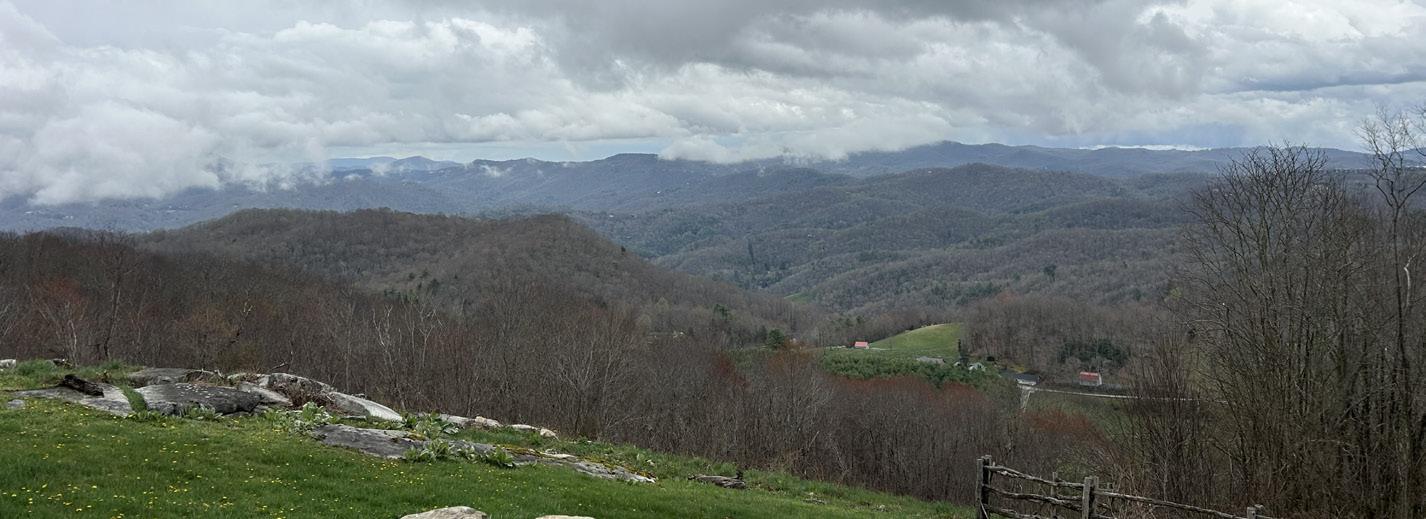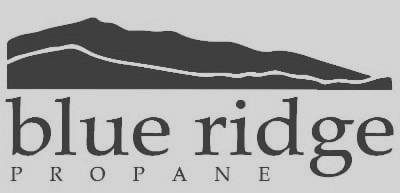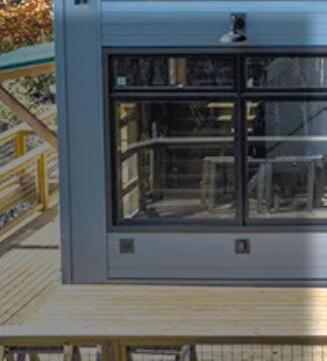GUIDEReal Estate 2025

What’s Inside:
Market update, buyer/seller tips, designing a home and more!


































































































































































Market update, buyer/seller tips, designing a home and more!
































































































































































According to Realtor Cindy Giarusso, the market is stable for buyers and sellers as listing prices have decreased and inventory has increased.
By Nick Fogleman
The High Country housing market gained momentum through 2025, with closed sales rising steadily from spring into August across Alleghany, Ashe, Avery and Watauga counties. At the same time, home prices softened and inventory increased, leading to longer listing times.
According to the High Country Association of Realtors (HCAR), closed sales increased through the summer while the price per square foot remained stable. Homes are staying on the market longer, reflecting the higher inventory. The median sales price of property, including homes and land, peaked at $438,500 earlier in the summer before easing to $385,000 in August.
For Realtor Cindy Giarusso, who has worked in the area since 2006, the current market feels more balanced compared to the frenzied conditions of recent years. She noted that, although sold prices have not changed significantly, buyers are showing more confidence as listing prices become more realistic and inventory grows.
“I think buyer confidence is everything,” Giarusso said. “When you have more inventory and reasonable listing prices, people feel better about what they’re paying. They know they’re not overpaying.”
Giarusso reported a 99.8% list-to-sold ratio last month, and across the High Country, homes are selling for about 95% of their list price. She pointed to Beech Mountain as an example. In August, 27 homes were under contract, a sign of strong demand.

“Buyer confidence came back huge in August,” she said.
According to Giarusso, popular price points include homes between $500,000 and $600,000 as well as properties over $1 million. Compared to other mountain destinations, the High Country remains relatively affordable. “A 900-square-foot condo in
a Western ski town might be $2 million,” Giarusso said. “That same size condo next to the ski resort is around $450,000.”
Giarusso noted a shift in buyer motivations, with more families now looking for vacation houses or permanent homes. “Before, people were buying for rental income. Now they’re buying for their
families, and maybe renting it out part-time just to help pay the bills,” she said. She’s also seeing more buyers in their late 30s and 40s entering the market, a shift from the heavy investment-driven buying of past years.
For both buyers and sellers, Giarusso said the market is healthy as long as sellers are realistic about timelines and listing prices. With inventory growing and buyer confidence rising, she noted, timing the market should not be a major concern. She advises sellers to focus less on timing and more on readiness.
“There’s always a buyer out there,” she said. “As long as we’re priced right, it just takes one. But I always tell my sellers, don’t list unless you’re truly ready to sell.”
Looking ahead, Giarusso expects the market to hold steady. Interest rates have dipped slightly, she said, but not enough to drive major changes.
“It’s a good market to be in for both buyers and sellers. It really is because sellers are still making money and buyers are not overpaying anymore.”
The High Country Real Estate Market, which consists of Alleghany, Ashe, Avery and Watauga counties, saw 204 closings on single-family properties, including condo/ townhouse properties, during August, with a combined closing total coming in at $136.1 million for the month, according to the HCAR August report.
That combined median sales price for the month was $485,250.
Nationally: Buyers are starting to take notice as more homes are finally hitting the market. As existing home sales rose 2% in July from the previous month, while inching above last year’s pace,


home buyers can take advantage of the most extensive inventory of homes for sale in years, according to the National Association of REALTORS®.
“Home buyers are in a good place to negotiate for a better price, in more than five years,” said Lawrence Yun, NAR’s chief economist.
The number of "For Sale" signs is up nationally by approximately 16% over last year’s levels. In addition, with the combination of rising inventory and slower price growth, buyers may have the power to negotiate more than they had in years, according to HCAR.
Inventory: Alleghany, Ashe, Avery, and Watauga Counties had 1,091 active singlefamily and condo/ townhouse listings during August 2025, with an additional 295 new listings during the month.
Watauga County: Watauga closed on 95 residential property sales in August 2025, which is up by 6.1% from July 2025. The median sales price was up by 6.1% at $599,000. In addition, there were 469 active residential properties in inventory, and 135 new listings in August, with a decrease of 10.6% from July. There were 19 land closings reported for August, up by 46.2% from July. The median sales price was $85,000, which was down 26.1% from July 2025. There are currently 484 active listings in Watauga County, with an additional 52 new listings in August 2025.
Ashe County: Forty-six closed residential sales in August, which was up 35.3% since July 2025, with a median sales price reported at $407,000, up by 5.7% compared to July. In addition, there were 205 active residential properties in Ashe County, and 62 new listings, down by 3.1% compared to July. There were 46 closed residential sales, which was a notable increase of 35.3%. There were 24 closed property sales reported in August. Therefore, the median sales price reported at $59,500, with 339 active listings, and 48 new listings, which are down 7.7% for Ashe County in August compared to last month.
Avery County: Forty-one residential properties closed in Avery County in August, which was up by 25.6% compared to July. The median sales price was $565,000, which was up 25.6%. Furthermore, there were 340 active residential properties in inventory, with 71 new listings, which was down 11.3% in August. There were 340 active residential properties in inventory, with 14 closed land sales in August, representing a 75% increase from July 2025. The median sales price was $145,000, up 41.5% from July. Moreover, there are 324 active listings in inventory, and 49 new land listings in Avery County in July 2025.
Alleghany County: Realtors closed on 21 residential sales in August 2025, which showed a significant increase in sales of 133.3% from July 2025. The county’s median sales price for August 2025 was
$277,500, which was down 13.3% compared to July 2025. There are currently 88 active residential listings, down 3.3% from July, with 27 new listings. There were 10 land closings in August 2025 with a median sales price equaling $62,500 for the month. There were 246 active land listings and 17 new listings in Alleghany County for August.
Land: Alleghany, Ashe, Avery and Watauga reported 67 land sales during August — an increase of 36.7% — with the median land sales price landing at $70,000, which was down by 28.6%. Land sales closed at 67, reporting a 36.7% increase in sales. There were 1,393 active land inventories, with an additional 166 new listings, resulting in a 20.9-month supply of inventory for August 2025, up 4.4% from July.
Commercial: There were 47 active commercial properties listed in the High Country Multiple Listing Service during August, which is a small decrease compared to July. There were five commercial listings sold in August 2025 for all four counties combined.
Disclaimer: Figures are based on the HighCountry Multiple Listing Service information. Data is for informational purposes only and may not be accurate due to MLS reporting processes. This data reflects a specific point in time and cannot be used in perpetuity due to the fluctuating nature of markets.





























By Moss Brennan
No matter the season, High Country towns are special in many ways. There’s something for everyone from Newland and Banner Elk in Avery County, Boone and Blowing Rock in Watauga County, and West Jefferson and Lansing in Ashe County.
In the fall, expect busy roads — especially in early to mid-October — as the High Country is a hot spot for leaf-lookers who come to see the vibrant fall colors. Make sure to check local news sources for updates on Hurricane Helene recovery, as even a year later, some places are still on the mend.
Boone
Boone is the county seat of Watauga County and is affectionately known as “The Heart of the High Country.”
Boone is the hometown of Appalachian State University, the sixth-largest school in the N.C. public university system with more than 20,000 students. With the mix
of students, tourists and easy-going locals, there’s something for everyone in Boone.
Downtown Boone hosts a unique collection of local boutiques and businesses for everyone to enjoy.
Tired of shopping? Kick back at one of Boone’s many breweries, many of which host live music and events in the evenings. Appalachian Mountain Brewery, Booneshine and Lost Province Brewing Co. are a few local favorites for a brew and a bite to eat.
For those interested in Boone’s bluegrass traditions, check out the Doc Watson “Man of the People” statue located on King Street. Doc Watson was a famous guitarist and bluegrass musician local to Boone. Watson won seven Grammy awards and a Grammy Lifetime Achievement award during his active years. Though he passed away in 2012, his spirit is alive and well in Boone.
Boone is the place to be for shopping, good food, good music, and definitely good times. For more information, visit www. townofboone.net.

Don’t be fooled by the small size of Blowing Rock — there’s enough natural beauty for a lifetime in the just three-squaremile town.
The town’s name comes from the rocky cliff overlooking Johns River Gorge, where it is said the winds blow in such a way that light objects falling from the rock float back up, almost like a boomerang.
Anyone wishing to experience the phenomenon and learn some of the rich Indigenous history of the town can visit the attraction located on The Rock Road.
The small portion of the Blue Ridge Parkway that falls into the town’s limits includes beautiful hikes and views like those at Moses Cone Manor and Julian Price Park. Visitors can find the same beauty off the Parkway at Bass Lake Trail — which has a brand new accessible path — and Broyhill Park.
For those seeking educational enrichment, the Blowing Rock Art and History Museum is a year-round museum that houses exhibitions and programs celebrating and remembering the culture,






“ WHERE COUNTERTOPS ARE CRAFTED AND TILE DREAMS COME TO LIFE”
WHAT BEGAN AS A SMALL TILE INSTALLATION BUSINESS HAS GROWN INTO A TRUSTED NAME IN THE HIGH COUNTRY, WITH CLASSIC STONE WORKS PROUDLY SERVING THIS COMMUNITY FOR MORE THAN 30 YEARS. TODAY, WE ARE A FULL-SERVICE COUNTERTOP FABRICATOR AND TILE SHOWROOM, BUILT ON DEDICATION, CRAFTSMANSHIP, AND HEART
AT OUR LINVILLE FACILITY, YOU’LL DISCOVER MORE THAN JUST COUNTERTOPS AND TILE, YOU’LL FIND A CREATIVE HUB FULL OF INSPIRATION. FROM OUR EXPANSIVE SLAB YARD TO OUR WARM AND WELCOMING SHOWROOM, WE OFFER EVERYTHING FROM TIMELESS CLASSICS TO BOLD, MODERN DESIGNS



BUT FOR US, IT ’S NEVER JUST ABOUT THE MATERIALS IT ’S ABOUT BRINGING YOUR VISION TO LIFE WITH CARE, GUIDANCE, AND GENUINE PASSION FOR WHAT WE DO. EVERY PROJECT IS PERSONAL. EVERY CLIENT IS FAMILY. EVERY DETAIL MATTERS.
THAT ’S WHY, FOR GENERATIONS, FAMILIES, DESIGNERS, AND BUILDERS ALIKE HAVE TRUSTED CLASSIC STONE WORKS WITH THEIR HOMES, THEIR STYLE, AND THEIR STORIES.
SINCERELY, ERIC & DEBBIE GUINN

history and traditions of the Appalachian region displayed throughout time in the High Country. The museum is just moments away from the bustling sidewalks of downtown Blowing Rock.
From hiking to gallery viewing to enjoying a spa day at the hotel, Blowing Rock crams a lot into its small stature. For more information, visit www.blowingrock.com.
Seven Devils sits between Banner Elk and Boone. Moments away from Boone, Blowing Rock, Banner Elk and Valle Crucis, it is the perfect place to stop and rest amidst the mountains.
How did it get its name? According to the Seven Devils website, “The founders wanted a catchy, unique name that would bring attention to the mountain. They noticed the repeated appearance of the number seven, including the seven predominant rocky peaks surrounding Valley Creek, as well as the many coincidental references to ‘devils.’ ‘Seven Devils’ seemed to suggest a frivolous, mischievous resort where people could experience the temptation of Seven Devils.”
Sugar Mountain, Grandfather Mountain, and Beech Mountain surround the elevated town. For those looking to adventure, take a trek to Otter Falls. The trail is a 0.6-mile hike to the falls; in total, the hike is 1.2 miles, including the way back. The trail encourages those going to the falls to bring furry friends to hike alongside.
The Seven Devils Golf & Ski Resort was established in the 1960s, and the town was incorporated on June 30, 1979. It has continued to adapt and grow while maintaining a commitment to its community.
For more information, visit www. sevendevils.net/.
Valle Crucis
Just off N.C. 105 south of Boone, Valle Crucis offers simplicity and serenity in a pastoral riverside community. The valley contains the site of the only known Native American village in the immediate area. The first European settler of Watauga County, Samuel Hicks, also built a fort in the area during the American Revolution.
Today, the community offers several historic inns, restaurants, art galleries, farms and churches that provide service and comfort to all who enter. The Episcopal
Church has played a role throughout the community’s history. An Episcopal bishop entered the community in 1842 and provided its name, which is Latin for “Vale of the Cross.”
The Valle Crucis Conference Center, on the National Register of Historic Places, stays busy with retreats for numerous groups, and Crab Orchard Falls is a short hike from the conference center. The original Mast General Store has provided a central gathering space in the community since 1883. Just down the road is the Mast Store Annex, which opened about 25 years later. Behind the annex is a gravel road to the Valle Crucis Park, a recreational area with walking paths, riverfront, picnic areas, sports fields and live music during the summer. For more information, visit www.vallecrucis.com.
Tucked between Boone and Banner Elk is the unincorporated community of Foscoe. Although small, the community is packed with opportunities to shop, dine and explore. It has approximately 100 small businesses and nonprofits, and a Community Center & Park that volunteers run.
The community is situated at 3,000’ elevation, but hilltops can range up to over 3500.’ When areas like Banner Elk have several inches of snow, the Foscoe area may only get a dusting.
For more information, visit www. foscoenc.com.
At 5,506 feet, Beech Mountain is the highest town in Eastern North America. That means two things: When summer comes, it’s a great place to go biking as the ski resort offers a bike park. Even on the hottest day of the summer, it’s cool atop the peaks of the mountain.
Even when it’s steamy in the “lowlands” of 3,000-plus feet, the temperature stays comfortable.
The rest of the world seems distant when you settle down on the front porch of a rental condominium and survey the magnificent view that is one of Beech Mountain’s trademarks.
Beech Mountain is a four-season resort with more than 5,000 beds available on top of the mountain. These range from rustic cabins to mountain chalets to luxury condominiums.
When it’s time to eat, you can enjoy anything from a deli sandwich to pizza to a gourmet meal by candlelight.
There’s another good thing about Beech Mountain: The mountain is so large that much of it remains in a natural state, with rich forests dotted by rolling farmland. Not to mention, it’s only a short drive from the “downtown” area to the country or resorts. Take your pick.
If you spend some time in Beech Mountain, you’ll want to come back to do




some real estate shopping or at least book a slopeside condo for the ski season.
For more information, visit www. beechmtn.com.
The mountain town of Banner Elk lies between two major ski attractions and has grown from a tiny hamlet to a town offering year-round amenities and memorable vacations for the entire family.
Banner Elk is home to Lees-McRae College, a small, private, four-year coeducational liberal arts college founded in 1900 and affiliated with the Presbyterian Church U.S.A., with more than 900 students from more than 20 states and countries. The old stone buildings, some of which are currently being renovated and restored, are nestled across campus to make for a photographer’s delight.
The town hosts numerous shops and restaurants and stays abuzz with activities and events.
Visitors can picnic or walk in the town park, hear live music in the town park during summer or within various venues in all seasons, enjoy exquisite shopping or simply relax by the Mill Pond and stay in one of the inns after dinner in a fine restaurant.
Banner Elk is in the heart of the High Country’s many attractions, and just a short drive will take you to numerous natural settings where you can relax and revel in nature’s beauty, from slopes to hiking trails to
wineries and waterfalls.
Visitors are encouraged to return to Banner Elk in the fall each year for its Woolly Worm Festival, which attracts close to 20,000 people annually on every third weekend in October.
Cutting between the peaks of Sugar Mountain, Beech Mountain and Grandfather Mountain, the topography of the town provides natural definition and gentle undulation through the town’s boundaries.
For more information or a calendar of events, call Banner Elk Chamber of Commerce at (828) 898-8395 or visit www. bannerelk.org.
Crossnore is a town steeped in educational history. The town is home to Marjorie Williams Academy, founded by doctors Eustace and Mary Martin Sloop.
The Sloops traveled steep dirt trails in isolated mountain valleys to bring medicine to the people and convince farmers to let their children go to school. Because of poverty and distance, the Sloops school in Crossnore eventually took in borders and built dormitories to accommodate them.
It gained a national reputation for effectiveness in changing lives and in breaking the cycle of poverty, moonshine and child marriages of mountain families. Mary Martin Sloop eventually put these tales to paper in her autobiography “Miracle in the Hills,” which has since been used as

the basis for a drama of the same name that takes place each summer in present-day Crossnore.
The Sloops built a school, hospital, dental clinic, and, eventually, a boarding school to give children the basis for an improved life. They brought to Avery County the first electricity, telephones, paved roads, and boarding schools. Through the Sloops’ advocacy, public schools flourished in Avery County.
Crossnore is famous for its Independence Day parade and celebration, and the town’s Meeting House is home to the Crossnore Jam, a series of gatherings and concerts by local musicians on the first Friday night through the summer and fall months.
For more information, visit www. crossnorenc.com.
The town of Elk Park borders the state of Tennessee and offers a unique visiting experience. From the old-time feel of Brinkley’s Hardware Store to the additional Lower Street antique shops and classic mural wall, Elk Park takes visitors back to a simpler time.
The town’s original thoroughfare, Lower Street, and many businesses originated when Elk Park hosted a train depot for the old East Tennessee and Western North Carolina Railroad, better known as Tweetsie. Elk Park thrived due to the industry and remained vibrant after the trains stopped running through town.
Elk Park is also the home of Trosly Farm and The Liar’s Table Restaurant. Owners Amos and Kaci Nidiffer were named 2020 North Carolina Small Farmers of the Year by NC A&T State University Cooperative Extension.
For more information, call Elk Park Town Hall at (828) 733-9573 or visit www. townofelkpark.com.
The community of Linville is located just south of the intersection of U.S. 221 and N.C. 105 in Avery County. The community was founded in 1883, designed by Samuel T. Kelsey of Kansas, and named for William and John Linville, who were reportedly killed by Cherokees in 1766.
Linville has three country clubs in the area: Eseeola, Grandfather Golf and Country Club and Linville Ridge, all open late spring
to early fall.
Several local tourist areas within a short drive share the Linville name, including the Linville River and majestic Linville Falls, Linville Caverns on U.S. 221 and the Linville Gorge wilderness area.
For visitors considering making Linville a part-time or full-time home, they can visit Linville Land Harbor, where units are available for sale or rent in a cozy community featuring its own golf course, tennis and pickleball courts, and amenities.
During the winter months, Linville is only a short drive to nearby ski slopes at Sugar Mountain and Beech Mountain, popular skiing and snow-tubing destinations.
Perhaps the most popular tourist attraction in Linville is Grandfather Mountain.
The Grandfather Mountain attraction offers picturesque views during all four seasons, animal habitats and the famous Mile High Swinging Bridge.
The highest county seat east of the Mississippi River, at 3,589 feet, the town of Newland was incorporated in 1913 as
the county seat of the newly formed Avery County.
Its original name was “Old Fields of Toe,” because it is located in a broad flat valley and is at the headwaters of the Toe River.
Newland was a mustering place for Civil War troops. Toe is short for “Estatoe,” an
Indian chief’s daughter who drowned herself in the river in despair because she could not marry a brave from another tribe.
A town of approximately 700 residents, Newland succeeded over three other areas for the honor of county seat. The recently renovated courthouse, originally



Absolutely outstanding! Working with Margo was truly afive-star experience from starttofinish. Herexceptional customer ser vice is what sets her apart-she was consistently attentive, responsive, patient and genuinely invested in helping us find the perfect property for our dream plan. It took over 2years, but we found the perfect place! What we appreciated most was howcaring and communicativeMargo was -wenever felt like “just another client.”Margo made us feel like apriority and treated our goals as her own. We couldn’t be moregrateful for her support, dedication and nowfriendship!


constructed in 1913, overlooks a classic town square, bordered by shops and churches and complete with a memorial to Avery County veterans.
Adjacent to the courthouse building is the original jail, which has been converted into the Avery County Historical Museum. Exhibits in the museum, which is free to visit, include the original jail cells, numerous artifacts, and information about the history of Avery County.
Newland hosts an annual Christmas parade downtown, with decorations adorning the town reflecting the area’s rich Christmas tree industry.
With a number of restaurants and boutiques downtown, Newland is a prime destination for dining and shopping, or just to stop in on a visit to nearby Roan Mountain, Tenn., or Grandfather Mountain. For more information, visit www.townofnewland.com.
If outdoor activity is your thing, look no further than the village of Sugar Mountain. Offering more than just great skiing, Sugar Mountain also provides its visitors with an array of ways to get outside and enjoy the beauty of the High Country.
Their public golf and tennis club, owned and operated by the village, is a local favorite. Voted the No. 2 short course in the U.S.A., the 18-hole golf course has immaculate greens and plenty of mountain views. Green fees start at just $15. The friendly pro shop and Caddyshack Café round out the perfect golf day.
Located adjacent to Grandfather Mountain and surrounded by Pisgah National Forest, the Village of Sugar Mountain offers a variety of adventures, including the alpine coaster, gem mining, whitewater rafting, and hiking. Unwind at 25 restaurants within five miles, along with plenty of galleries and boutiques to browse.
Whether you come for a day or stay in one of the many comfortable lodgings the village has to offer, Sugar Mountain will soon become your destination for great outdoor fun.
For more information, visit www. seesugar.com.
Jefferson
Jefferson, the county seat of Ashe County, is home to roughly 1,600 residents within
the town limits. The town was first founded in 1799 and was named after then-Vice President Thomas Jefferson. The town was originally called “Jeffersonton” for a short period and encompassed approximately 50 acres of land.
Now, Jefferson is home to the Ashe County Courthouse, Ashe County Park, the Ashe County Law Enforcement Center, and numerous restaurants, shops, and stores. The town also has the restored 1904 Courthouse listed in the National Register of Historic Places. The old courthouse is currently home to the Museum of Ashe County History, right next door to the Jefferson Police Department.
The bustling downtown area of West Jefferson is one of the most popular destinations in Ashe County. West Jefferson currently has around 1,300 residents who live within the town limits and has a wide variety of shops, art galleries, local restaurants, and much more that bring tourists to the area. The Ashe County Arts Council calls West Jefferson home, as does the Ashe County Cheese Plant, West Jefferson Park, and the local office of the New River Conservancy.
West Jefferson was first incorporated in 1909 and originally saw much of its growth and popularity increase due to the Virginia Creeper Railroad that passed through downtown.
West Jefferson has numerous events in the downtown area that take place throughout the year. In addition to concerts throughout the spring and summer months,
the Christmas in July festival and the Olde Time Antiques Fair in September are two of the largest annual events that take place in Ashe County.
Lansing was the third and final town in Ashe County to be incorporated officially. The town of about 130 residents was first incorporated in 1928 and was another major stop along the Virginia Creeper railroad, along with West Jefferson, Todd, and the community of White Oak. The town has significant historical significance to the area as there are currently five places in the city that are included in the National Register of Historic Places: The Old Lansing School, Perry-Shepherd Farm, Miller Homestead, Clark-Miller Mill and the Lansing Historical District.
The population of Lansing within its town limits has dropped throughout the years after the railroad industry ceased in the county. The 1960 census showed 278 people lived in the town, while the most recent census in 2020 showed just 126 town residents.
Located just off the Blue Ridge Parkway, Glendale Springs is most well-known for the fresco painting at Holy Trinity Episcopal Church and the Glendale Springs Inn & Restaurant, where President Bill Clinton and Vice President Al Gore once dined after a visit to Ashe County in 1998. The Glendale Springs Inn was also added to the National Register of Historic Places in 1979. In addition to

its easy access to the Blue Ridge Parkway, Glendale Springs is near the New River and offers some beautiful opportunities for enjoying nature.
Fleetwood is located between West Jefferson and Deep Gap and is another of the many small communities in Ashe County that offer easy access to the New River. Whether you want to kayak, canoe or float down the river, areas between Fleetwood and Todd off of Railroad Grade Road are popular places to get into the water. Fleetwood is also home to a newer, more modernized fire department right off of U.S. 221.
The community of Grassy Creek lies right on the state line between North Carolina and Virginia. Grassy Creek is home to The Old Store and features the Grassy Creek Historic District that is part of the National Register of Historic Places. The historic district was added to the registry in 1976. As you will notice driving through the area, much of the land in Grassy Creek is used for growing Christmas trees.
Creston can be found in the northwest corner of Ashe County. It is home to Worth’s Chapel, a church that was constructed in the early 1900s and added to the National Register of Historic Places in 1976. A drive through Creston brings you close to the Tennessee state line in one direction. Creston is also home to the Riverview Community Center, which holds numerous community events throughout the year, and is home to a local fish fry every other week.
The town of Laurel Springs is right on the border of Ashe, Alleghany and Wilkes counties. The town offers quick and easy access to the Blue Ridge Parkway and is home to several family-owned businesses and the Thistle Meadow Winery, which is open in the spring, summer, and fall months. Thistle Meadow Winery offers tours, tasting events, and an online store for ordering products to those living outside the area.
Todd is a small town shared by Watauga and Ashe counties, nestled in a bend of the South Fork of the New River.
Todd is an area with a rich history, one dating back nearly 6,000 years. According to the Todd Community Preservation Organization, that is when the earliest human activity in the area occurred.
As for recreation, the New River — one of only a few rivers in the U.S. to flow North — is the main attraction in Todd, especially in the summer.
Go fly fishing, kayaking or tubing with one of the several river outfitters in the Todd area, such as RiverGirl or Wahoo’s.
Anyone wanting to explore on their own should check out Green Valley Community Park. The park features playground equipment, playing fields, a paved walking track, a picnic shelter, restrooms, a canoe ramp, hiking trails and access to the New River.
Being one of the smaller towns in the High Country, Todd is a closeknit community. To connect with nature (and friendly locals), be sure to check it out.







By Zach Colburn
When it comes to buying a home, it can be stressful with a lot of information coming at you that can be difficult to decipher — especially if you’re a first-time homebuyer.
Scott Warren, the Broker in Charge for Boone Realty, shared some of the Frequently Asked Questions that real estate agents get asked when it comes to buying a home.
In addition to the questions he commonly gets asked, Warren also offers the advice that he gives homebuyers so they can make the best decision for themselves.
Q: Should I wait for the market to go down, or is now a good time to buy?
Never an easy answer to questions about the market because no one can predict the future. We have seen it work in favor of clients and completely against them. In theory, real estate prices tend to increase over time, so waiting is generally not advantageous. In the High Country, we can track this back to the 1950s, and our market has only lost value once, with the Great Recession being the exception. People that were on the fence in 2019 and 2020 found out the hard way that they should have jumped! If you can comfortably afford to buy a home vs. renting and plan to be in the home for a decent amount of time, it is rarely a bad financial decision.
Q: Will rates go down?
Another request to be a fortune teller. Rates are driven by several factors that are difficult to predict. The good news is that refinances are possible and can potentially correct mistakes. A general rule of thumb is that a 1% or greater savings is worth a refinance. I have heard many

lenders use the phrase, “Marry the home, and date the rate.” It’s a little cheesy, but true at the same time.
Q: What contingencies do we need to add to the offer?
The state of North Carolina did away with a contingency-based contract around a decade ago. We now use a due diligence period. This period is designed to take away the grey areas that a contract full of separate contingencies had, and help create a contract that is much more black and white.
You are now offering and negotiating five key points — the price, the due diligence fee, the earnest money, the due diligence date, and the settlement date.
The due diligence fee and earnest money are fees/deposits that give protection and compensation to the seller for marking their property under contract and slowing down or stopping showings. Both go towards the purchase if you buy the home. Think of the due diligence fee as a non-refundable deposit that buys you the right to walk away from the contract at any point during your due diligence period if you discover anything that you do not like or can not negotiate a remedy for. The due diligence period is the time in the contract for you to do your inspection, get quotes, line up your financing, etc. — if you terminate the contract during this period, the sellers keep your due diligence fee. You are also out any money spent on inspections, appraisals, etc., but you have possibly avoided a much larger mistake, and you will get your earnest money back. I usually tell my clients to think of it as they are renting the home, not to live in, but to investigate and line up financing, etc. and they can terminate for any reason or no reason at all.
For the sellers, this is the opposite; they can
not terminate, even if someone offers more money, hence the fee.
Typically, there is a gap between the end of the due diligence period and the settlement date (closing). During this time, the Earnest Money goes “hard.” It means that if the buyer can not follow through with closing, then the sellers will also keep their earnest money deposit along with the due diligence fee. The sole remedy for a buyer breach of contract — aka not purchasing at the eleventh hour — is the combination of these two fees.
It wasn’t until HGTV became popular that we discussed closing costs.
The reality is that both buyers and sellers have their own closing costs that they are responsible for, and these costs vary on every transaction. This makes it very difficult to negotiate these costs.
The buyer’s closing costs are typically made up of their down payment, appraisal, bank fees, inspections(several different types), attorney fees, homeowners’ insurance, title insurance, pro-rated taxes, pro-rated POA/HOA dues and the list goes on. There is a section on the contract where a buyer can negotiate “seller-paid closing costs”, but this is typically only used when the buyer has good credit but does not have all the funds needed to close. We can use this section to negotiate a limited (by the lender) amount of seller-paid closing costs to allow them to basically borrow this money on top of what they are paying for the property.
For sellers, their fees are not as long and complicated, but they are typically paying the real estate agents’ commissions along with their attorney fees, pro-rated taxes, and POA/HOA dues, deed stamp tax, etc.

• Guest Experience: We deliver 5-star stays by attracting respectful guests,leading to glowingreviews and repeat bookings.
• Financial Goals: Our professional insight helpsyou generate impressiverental income and buildlong-ter mequity with astrategic plan that aligns with your goals
• Home Care: We protect your valuable asset with professional cleaning and proactive maintenance,ensur ing it remains in pr istine condition.
• Trusted









By Nick Fogleman
For Realtor Cindy Giarusso, choosing the right real estate agent comes down to local knowledge, honesty and communication.
Giarusso moved to Beech Mountain in 2005 and earned her real estate license a year later. Since then, she has focused on listings while also assisting buyers in
the surrounding High Country. Her advice for sellers and buyers is simple: start with local expertise.
“Honestly, the best thing is that they choose an agent who specializes in their area,” Giarusso said. “Someone who knows it. I know the statistics. I know what sells. I know what we need to do to get the property sold.”
Agents who live in the community, she said, gain a valuable perspective on everything from traffic patterns to neighborhood amenities. They also stay in close contact with other local agents, helping them match buyers with available properties more effectively.
Beyond local knowledge, Giarusso emphasized the importance of honesty in building trust.
“Choose an agent that’s honest about the price, honest about what you need to do,” she said.
She encourages homeowners to ask one essential question during an interview: “How are you going to sell my house?”
For her, the answer includes professional
photography, a 360-degree tour and property videos.
In today’s market, visibility is critical. Giarusso regularly posts market updates on social media, sharing statistics on local sales and price per square foot.
“Everyone’s on the internet now,” she said. “They’re searching for homes, realtors, coaches, everything. You’ve got to be on social media.”
Once you’ve chosen a real estate agent, Giarusso said good communication is one of the best tools for professional agents.
“Clients want a prompt response,” she said. “If I don’t respond, there’s a reason why. But I will get back with you.”
Challenges often arise once a property goes under contract, especially during negotiations over repairs. Those moments, she said, test an agent’s ability to listen and should be an early consideration when interviewing agents.
“That’s the hard part right there,” she said. “Clients want to know that you’re listening to them and that you understand what they’re going through.”
Strong professional relationships with other agents can also make a difference.
“If you have a good working relationship with other agents, you’re going to sell more properties,” Giarusso said.
Ultimately, Giarusso believes the best fit is an agent who balances expertise with trust.
“It all goes back to honesty,” she said. “If you can’t be honest with a client, then you don’t want them as a client, because there’s going to be conflict there.”


By Nathan Ham
Navigating the real estate market can lead to even more questions as you decide where you want to call home. Deciding whether to buy a property or seek out a rental property is the first and possibly the most difficult decision a person can make.
Purchasing a home, especially for a firsttime home buyer, can be a lot to take on right out of the gate. However, if you can afford the mortgage, the home insurance and the property tax, it is a worthy investment, according to Amy Ballou with New River Realty.
“When you are buying a property, you are paying your mortgage and not somebody else’s mortgage. You are building equity for yourself, and you’re building something for yourself that you can pass down to your family,” Ballou said. “The way property values are rising, if you ever have to sell, the odds of turning a profit are great.”
Buying a house also gives you the opportunity to assess the property and make changes to it, such as a fresh coat of paint, building add-ons such as a deck, patio, or a garage, and you don’t have to seek
the permission of a landlord to make any changes to the house.
“When you buy, you can do what you want to with the home, you can make it your own,” Ballou said.
Buying a house comes with some added expenses to consider, such as maintenance and repairs, as well as taxes and potential HOA fees that might come with the neighborhood you are moving into. Sometimes renting can be a better option depending on your financial stability.
“If you are renting, you don’t have the responsibility of having to pay the taxes, you don’t have the responsibility to fix everything that goes wrong,” Ballou explained. “When you are renting, if you are here for just a short time, you don’t have to worry about selling a house.”
A couple of the most important drawbacks to renting that should be considered include the potential sale of the property you are renting as well as the rules and bylaws that are presented by the landlord. A landlord could potentially make the decision to sell the property you are renting to someone who wants to live in that property, or the landlord could raise your rent. The added rent could make it more difficult on your
financial situation and take away money you had planned to spend on other things. A landlord could also implement rules on the property, including parking restrictions and pet restrictions.
A more recent concern with renting a property long-term is the growing market for short-term and vacation rentals, such as through Airbnb and Vrbo.
“Unfortunately, long-term rentals are few and far between anymore. A lot of things in our area have gone to Airbnb and short-term rentals, for obvious reasons. The owners make more money, the houses are cleaned almost every week, the owners never have to worry about evicting somebody because the renters have a home to go back to, they are here on vacation. Most of the time, they are not here to tear anything up, where many long-term rentals have a lot of things that get torn up,” Ballou said.
When deciding whether to purchase or rent a home, consider your financial stability, your long-term plans for the area, and the current housing market to determine whether buying is more feasible than finding a long-term rental.

By Dianne Davant President, Dianne Davant and Associates
Beginning to design the interior of your home can feel like a daunting undertaking, but following a few essential steps can make the process much more manageable — and even enjoyable.
First and foremost, even the wealthiest clients appreciate establishing a realistic budget. This gives us, as designers, the framework to make smart, appropriate choices when it comes to furnishings, finishes, and accessories.
Next, we explore color preferences. Do you gravitate toward bold, saturated palettes, or do you prefer soft, neutral tones? Understanding your personal aesthetic helps guide the entire design process.
We also take time to understand your lifestyle. Do you live casually and want a relaxed, welcoming environment, or do you prefer a more refined, formal look? Are there children or pets in the home? If so, we’ll
likely recommend performance fabrics that resist spills, stains, and wear — practicality without compromising style.
Creating a functional floor plan is key. We focus on accessibility and flow between rooms, ensuring doorways are left clear for both safety and seamless movement throughout the space. The scale of furnishings is also critical — large-scale pieces suit expansive rooms, while more compact spaces call for smaller, wellproportioned furniture. Crowding a space or leaving it too sparse can disrupt the overall balance.
We love to incorporate unique accents that reflect our clients’ personalities. This often includes treasured items collected during travels or meaningful heirlooms. That said, it’s important not to overwhelm a space. A carefully curated environment feels intentional, not cluttered. In fact, decluttering is often the first step we take when beginning a remodel or redesign. Over
the years, we all tend to accumulate more than we need — it’s our job to help clients decide what’s truly meaningful and worth keeping.
Texture is another vital element in interior design. For instance, if we choose a highly textured fabric for a sofa, we may contrast it with smoother materials for chairs to create visual interest. Leather is another great option — durable, timeless, and stylish for upholstered pieces.
In the end, designing your home is about creating a space that reflects who you are, supports how you live, and brings you comfort and joy every day.
For more information about Dianne Davant and Associates, visit www.davantinteriors.com/about/.

By Giada Ehresman
When choosing where to live and considering the pros and cons of urban and rural areas, buyers are often thinking about not just where they live, but how they live. Each setting offers a unique lifestyle — urban living offering convenience and fast-paced living while rural areas, like the High Country, stand out as a better fit for families, retirees and anyone seeking peace, privacy and a true sense of community.
Urban areas often have a higher proximity to entertainment and industry, meaning there is convenience in everything being localized. Larger populations come with more hustle and bustle, while rural communities are often sought after for their access to the outdoors and the sense of freedom that may come with rural recreation. For many, the slower pace of rural living allows for deeper connections with

neighbors, healthier living environments and more opportunities to enjoy the beauty of the natural world.
Matt Lambert, a realtor with Premier Sotheby’s, shared insight about High Country living.
“You get clean, fresh air and fresh water. It’s a gorgeous place to live. The biggest attraction would be the outdoors and recreation; tons of mountain biking trails, hiking and kayaking,” Lambert said.
According to the High Country Visitors’ Guide, there is plenty to see, especially in Boone, Blowing Rock, and Banner Elk, with spectacular scenery and dynamic outdoor landscapes; and the Blue Ridge Parkway, which twists throughout the High Country, has wonderful sites and trails to visit.
Though the High Country is an enviable four-season destination with year-round views, there are some questions one must ask when considering urban vs. rural living, 828 Real Estate considers questions such as: “How close would you like restaurants and shopping?” “How close is the nearest grocery store, gas station, coffee shop, or hospital?” “What do you think about wildlife intervening in daily life?” “How close are schools, and how expensive is it to live here versus the city?”
Considering all this, it is essential to think about what best suits your lifestyle. When considering the proximity of work and leisure, the rise of remote and hybrid work has made the rural lifestyle more appealing. Unlike urban living, the commute from place to place may be longer or more expensive — especially considering what public transportation may or may not be available. Privacy may be harder to find for urban homeowners, but for many, the high-paced city life can be energizing and exciting, including more diverse job opportunities, quicker access to entertainment and
resources, and being a part of a larger community. By contrast, rural living is often celebrated for its sense of community fostered by locally owned businesses, faith groups and strong neighborhood ties.
Finding suitable housing in rural areas can be challenging, making it crucial to find reliable realtors and agencies that can offer the best opportunities for discovering a home that suits your lifestyle.
According to NC State University, the Bureau of Economic Analysis (BEA) has placed North Carolina as the 19th lowest-cost state in the country and revealed that the urban-rural living costs place rural areas as more cost-efficient and affordable compared to urban areas.
NC State University also reported that business recruitment is often focused around metropolitan areas because of their proximity to universities, transportation, entertainment and shopping convenience— though items may be considerably cheaper in rural areas than in urban areas. For many buyers, this balance of affordability and lifestyle freedom makes rural living a worthwhile investment in both quality of life and financial well-being.
Ultimately, the decision comes down to one’s values and priorities. Do you prefer the immediacy and variety of the city? Does the quaint and adventure-seeking nature of rural living speak to you? Some buyers have decided to have the best of both worlds with a second home or vacation home in a rural area.
Lambert said that the High Country is a hotspot for the second-home and vacation house market.
“It is a huge deal,” Lambert says, “About 70% of buyers are investors looking for a second home or vacation rental.”
Premier Sotheby’s reports that since 2020, there has been an influx in the market for
rural living.
“The High Country is obviously a very sought-after area,” Lambert added. “We will likely see quite a bit of growth in the next ten to fifteen years here.”
The High Country provides endless mountain adventures, seasonal festivals and year-round recreation that draws both vacationers and long-term residents. From skiing to kayaking, the area has become an attractive destination for those who want both a retreat and an investment.
Whether a full-time resident or not, the High Country and rural living stand out as more than buying property—you’re buying into a lifestyle rooted in nature’s beauty and a lasting sense of community. Working with experienced local realtors ensures that buyers not only find the right home but also a place that truly matches their lifestyle and goals.








By Moss Brennan
While North Carolina and the East Coast don’t have the intense, large wildfires that can occur out west, they do happen.
From barely an acre to more than 200 acres, wildfires are common during the season. Over the years, Watauga County Forest Ranger Andrew Harsey recently told a local town council that over the last five years, fire calls have risen dramatically. Harsey reported 345 fire calls compared to 101 in the previous five-year period, a 241% increase. Of these,





















127 were confirmed wildfires requiring active suppression efforts, with crews protecting 226 homes and 146 structures with an estimated combined value of over $110 million.
In 2023, Watauga County had its largest wildfire in recent years in the Powder Horn Mountain community, when 225 acres burned in early November. The fire threatened 50 homes and 15 minor structures — like outbuildings — but none were damaged.
In North Carolina, the typical fire season goes from October to December and March to May. According to the National Interagency Fire Center’s National Significant Wild Fire Potential Outlook report on Sept. 1, October could see above normal significant fire potential in the mountains of North Carolina, due to the potential for early leaf drop combined with Helene’s impacts on the fire environment.
According to the North Carolina Forest Service, the wildland urban interface — the area where structures and other human development blend with undeveloped


wildland, forest or vegetation — is a notable threat for increased wildfire impacts due to rapid population growth and people moving into formerly rural areas, increasing WUI acreage.
This trend is significant due to the nearly






13 million North Carolina acres classified as WUI, which leads the nation in this amount of area. Additionally, more than half of North Carolina’s citizens live in WUI areas. The dangers of the WUI mean that homeowners must take the initiative in working to protect

their property and neighborhoods before a wildfire occurs, according to the NCFS.
For those living in the WUI, especially those in Western North Carolina experiencing excessive fuel loading from Hurricane Helene storm debris, the following are some easy steps to protect your home from wildfires:
• Clear off pine needles, dead leaves and anything else that can burn from your rooflines, gutters, decks, porches, patios and along fence lines. Falling and windblown embers will have nothing to burn.
• Trim back any shrubs or tree branches that come closer than 5 feet to your house, along with any overhanging branches.
• Walk around your house and remove anything within 30 feet that could burn, such as woodpiles, spare lumber, vehicles, boats and anything else that can act as a large source of fuel.
• Instead of landscaping with flammable mulches, consider using crushed stone or gravel.
• Rake out any landscaping mulch at least 5 feet away. Embers that land in mulch that
touches your house, deck or fence is an easy fire hazard.
• Store away furniture cushions, rattan mats, potted plants and other decorations from doors, decks, porches and patios. These items catch embers and help ignite your home if you leave them outside.
• Assess your house to see what openings you can screen or temporarily seal. Windblown embers can get into homes easily through vents and other openings, burning the home from the inside out.
• Create fuel breaks with driveways, walkways/paths, patios and decks.
One of the main causes of wildfires is debris burning that escapes containment. Those burning debris should use the following tips:
• Check local burning laws. Some communities allow burning only during specified hours. Others forbid it entirely.
• Make sure you have a valid permit (once it is required again). You can obtain a burn permit at any N.C. Forest Service office or authorized permitting agent, or online at www.ncforestservice.gov/burnpermit.

ChimneyWater Proofing •ChimneyCapsand Cha ses
Video Inspec tion •Masonry Repairs•Wood Stove Sales
Office: 828-688-0405
www.tristanschimneyser vice.com email: office@tristanschimneyser vice.com

• Keep an eye on the weather. Don’t burn on dry, windy days.
• Local fire officials can recommend a safe way to burn debris. Don’t pile vegetation on the ground. Instead, place it in a cleared area and contain it in a screened receptacle away from overhead branches and wires.
• Be sure you are fully prepared before burning. To control the fire, you will need a hose, bucket, steel rake and a shovel for tossing dirt on the fire. Keep a phone nearby, too.
• Never use kerosene, gasoline, diesel fuel or other flammable liquids to speed up debris burning.
• Stay with your fire until it is completely out.
• North Carolina law prohibits burning trash and non-vegetative materials.
To learn more about fire safety and preventing wildfires and loss of property, visit www.ncforestservice.gov/fire_control/ fc_firesafetyoutdoors.htm. For information about creating defensible space and a fireresistant landscape around your home and property, visit www.resistwildfirenc.org.














By Jesse Campbell
Buying a home can be a nerve-racking experience for potential first-time homeowners.
Broker-in-Charge Benjamin Ray, of Client 1st of the High Country, always recommends prospective buyers to have a good amount of “cash on hand” while improving their credit scores before beginning the purchasing process, which also includes getting lender pre-approval.
Lenders typically check the house hunter’s credit score, employment status, and their debt-to-income ratio.
While disposable income is often a common barrier for first-time home ownership, zero or low-money government program loans, such as USDA or FHA loans, with 3 to 5% financing, are great resources for











































qualifying applicants.
“Once they can get approval, they get an idea of what they can afford and can reach out to an agent, or they might get online (to look at houses) before talking to an agent,” Ray said.
Ray said potential buyers should also consider the unforeseen expenses of owning a home.
“Owning your first house, and not paying rent, can be great and glamorous, but there are also expenses they might not know about,” Ray said.
One common pitfall of hidden expenses is overlooking higher monthly power bills for baseboard heating and other utilities.
Home seekers scouting the market should also research the differences between septic, wells, and springs for water sourcing. Becoming knowledgeable about easements, including for driveways and scenic views, is also beneficial, he said.
Owning a home in the western North Carolina mountains also comes with challenges. Buying a house with a steep gravel driveway or near a normally quiet

creek prone to flooding, as in the case of Hurricane Helene, could prove to be a poor investment. Buyers should also familiarize themselves with the community the house is in before making a purchase.
“Neighbors matter,” Ray said. “What type of owners are in the area? Is it primary or vacation rentals? There are a lot of dynamics of buying here that people off in the city wouldn’t know.”
Location is also a driving factor when advising clients on purchasing a home.
“I talk to buyers about location in general, and the reason I do is because I’ve been an investor too, and I like to know where things are going,” Ray said. “An example would be the US 221 corridor. That whole area in West Jefferson is a highgrowth area, so it’s good to think about highway access there. A lot of agents might not talk about it, but I like to think about people’s assets and how to grow those assets over time, and get people’s ideas about what to do later in terms of buying and renting on the backend.”








Nestled in the mountainsofJefferson, NC, restsanupscale resort community ideal for we ekend getaw ays, specialeventsand ever yday living. Jefferson Landingisa gorgeous, gated development featuring luxurious accommodations, finedining andaffordable membership optionstoour golf andsocial clubs. Book your adventuretoday to explore, experienceand enjoyall that Jefferson Landinghas to offer.




